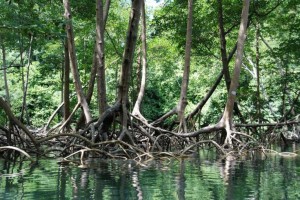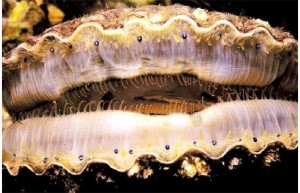The Daily World, April 5th, 2014. By Brionna Friedrich
The frightening impacts of a changing climate are sometimes unavoidable, but an upcoming workshop takes a proactive look at how to cope with changing coastlines and ocean chemistry.
“If we can snatch opportunity out of the jaws of climate change, we’ll be doing a smart thing,” said Eric Swenson, communications and outreach director of Global Ocean Health. “That’s a real message I hope resonates and people can act on. Can we benefit from the coming circumstances?”
The non-profit initiative focuses on the impacts of ocean acidification, the absorption of carbon dioxide into ocean waters, which is already impacting local industries like shellfish growers.
It specifically works with seafood producers and coastal communities on options for adaptation.
The free workshop, set for Tuesday in the Rotary Log Pavilion in Aberdeen, will connect climate change and ocean acidification experts with local and regional policymakers and the general public.
The morning session, from 9 a.m. to noon, will feature speakers on changing aquaculture and how marine plants and grasses can help absorb CO2.
Stephen Crooks, climate change program director for Environmental Services Associates, has recently briefed the White House and the United Nations on the impacts of estuary restoration, Swenson said. “Now he’ll be doing a briefing for the Washington coast in Aberdeen,” he said. “We’ve got some actual world-class folks on the agenda.”
Marine and coastal vegetation provides opportunities, from contributions to overall estuary health to a possible commercial enterprise, harvesting food and biofuel.
“This isn’t pie-in-the-sky, people are doing this and making money at it in Asia,” Swenson said.
It could also provide a tool for shellfish farmers. Acidic ocean waters can decimate delicate oyster larvae.
“If you can just move the meter a point or two in some key areas, it’s the difference between life and death,” Swenson said.
“There’s a fair amount of research that shows that when shellfish and seagrasses co-exist — the right kind of seagrasses — it’s to the benefit of both,” he continued.
“We will be looking at how plants sequester the carbon. The salt marsh plants, for instance, do a job that’s about five times as effective as a tropical forest, so photosynthesis can really be made to work for us.”
A free lunch will be offered before the afternoon session, from 1 p.m. to 4 p.m., which will discuss local planning and policy processes that can help in preparation for a changing coastline.
“We’re bringing (ocean acidificaton) into a wider context of what the coast is going to look at in 20, 30 or 40 or more years, and it’s going to be very different than what it is now,” Swenson said. “By trying to consider what the coastline is going to look like with the higher sea, we may be able to shelter shellfish, we may be able to protect our estuaries, which are such nurseries for a variety of sea life.”
“If we learn to plan for it well, sea level rise might be more than just a problem — which it certainly will be — but an opportunity,” Global Ocean Health Director Brad Warren wrote in a press release. “Higher water will make more room for estuarine ecosystems that can sometimes chemically shelter vulnerable larvae from corrosive waters. It won’t be a smooth transition, but sea level rise may open up new areas for farming shellfish and marketable marine macroalgae. It will increase coastal habitats that support hunting and fishing and expand the nursery grounds that support most of the world’s seafood supply.”
Some basic understanding of ocean acidification will help for those who attend the workshop, Swenson said, but scientific expertise isn’t a requirement.
“I think people who have at least a fundamental grasp of what we’re talking about will be better served by the meeting, but it is designed to be open to the public, free of charge, with that free lunch included, in an attempt to draw in people who want to learn more about this,” Swenson said.
The Rotary Log Pavilion is located at 1401 Sargent Blvd. in Aberdeen. No registration is required for the workshop.
Source link




